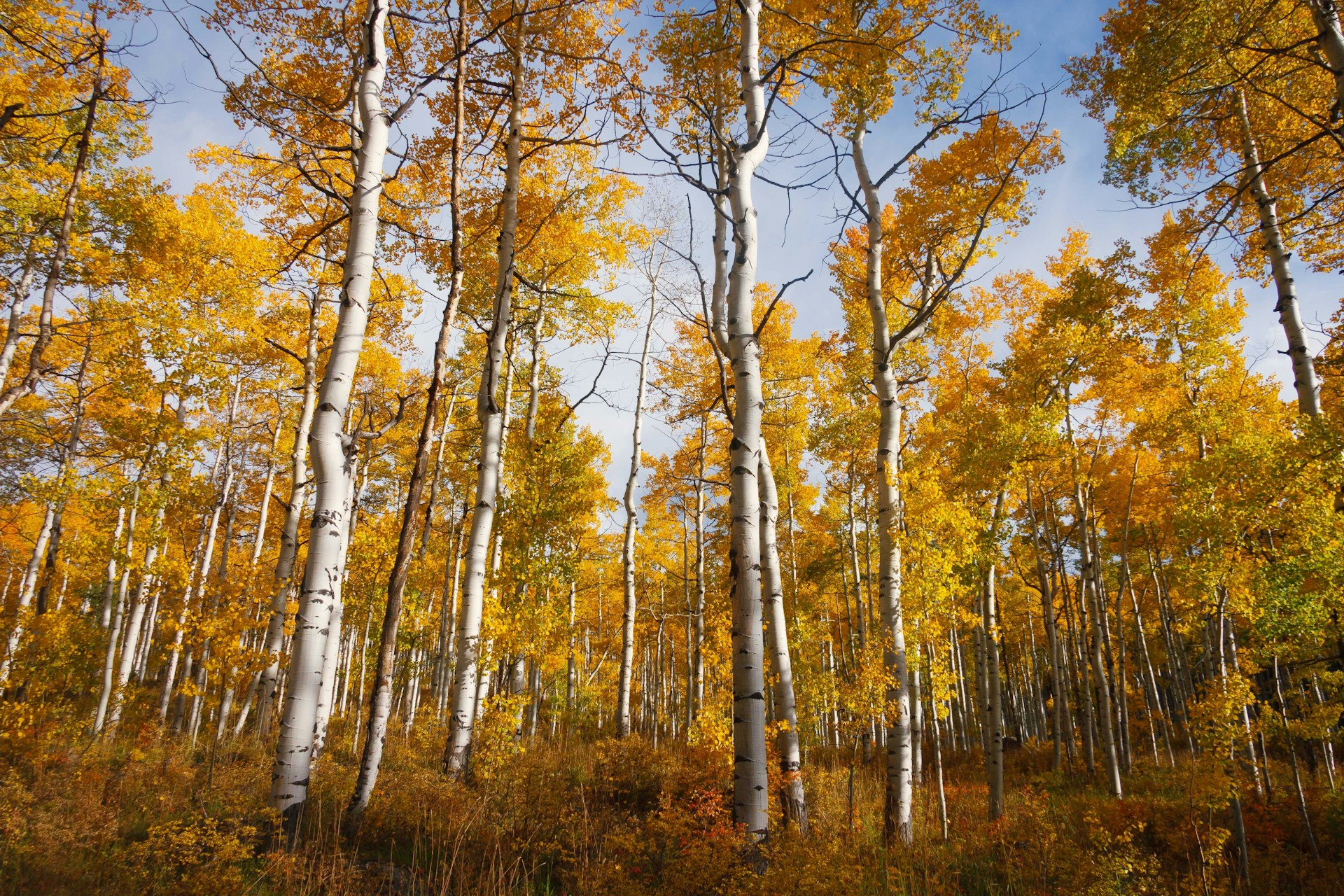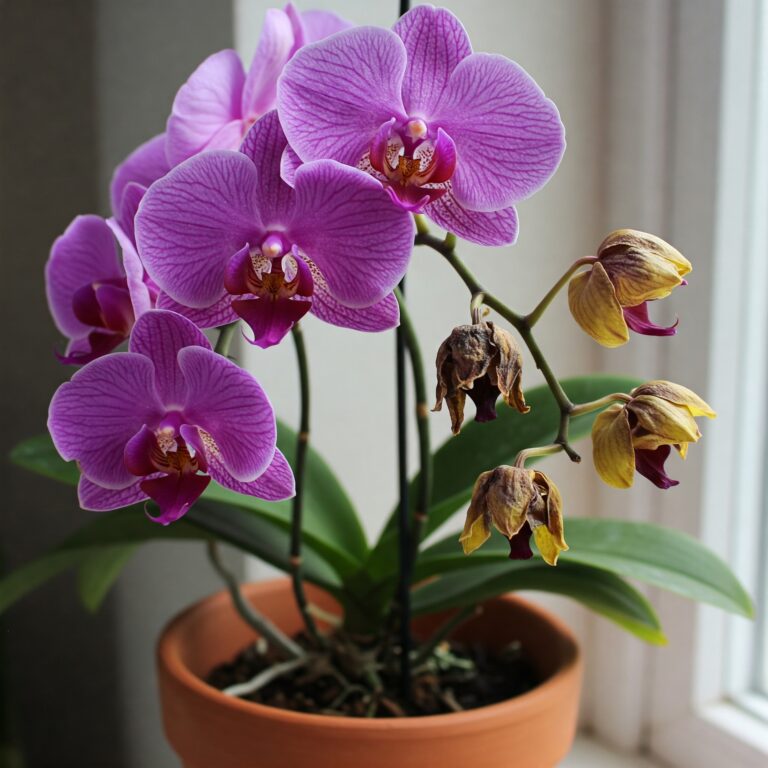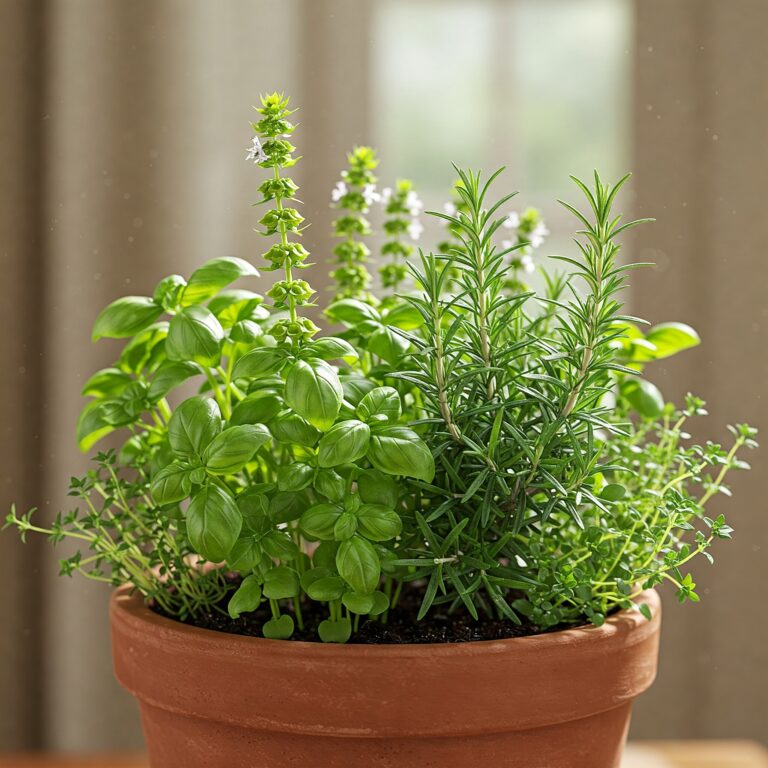Aspen trees, with their distinctive white bark and fluttering leaves, are beautiful in many regions. However, it can be sad for gardeners to witness their vibrant green leaves gradually turning yellow. Yellowing leaves on aspen trees are not uncommon and can be attributed to various factors.
Yellow leaves on aspen trees can occur for multiple reasons, including nutrient deficiencies, diseases, environmental stressors, and pests. One of the primary causes is the lack of essential nutrients, particularly iron and manganese.
Environmental factors such as drought, waterlogged soil, extreme temperatures, or poor soil drainage can also contribute to leaf discoloration. Furthermore, aspen trees can be susceptible to diseases like leaf spot or fungal infections, which can cause yellowing and eventual leaf drop.
You can easily address these once you have identified the underlying cause accurately. This article will discuss the various causes of yellow leaves on aspen trees and help you find the best possible solution.
The major causes of yellow leaves on aspen trees.
Let’s discuss the factors that are affecting your aspen trees.
Insufficient watering.
Insufficient watering can have a detrimental effect on aspen plants, leading to leaf yellowing and stress. An adequate water supply is essential for the proper functioning of aspen trees, as it supports various physiological processes, including nutrient uptake and photosynthesis. When aspen plants don’t receive enough water, they may experience the following:
- Dehydration and wilt
- Reduced nutrient uptake
- Increased susceptibility to stressors
Ensure you provide regular and consistent watering, particularly during dry periods or drought conditions. As a general guideline, aim to provide around 1 inch (2.5 cm) of water per week through rainfall or supplemental irrigation. You can check the moisture content in the soil using a moisture meter.
When you water your aspen tree, it is essential to water deeply. This encourages the development of a strong and extensive root system, which can better withstand periods of water scarcity. Water deeply by allowing the water to penetrate the soil to a depth of at least 6 to 8 inches (15 to 20 cm).
Also, you can apply a layer of organic mulch, such as wood chips or compost, around the tree’s base. Mulching helps to retain soil moisture, reduce weed growth, and regulate soil temperature. It also prevents water loss through evaporation and promotes a healthier root environment.
Nutrient deficiencies.
Nutrient deficiencies can significantly impact aspen plants and contribute to the yellowing of their leaves. Aspen trees require a range of essential nutrients to carry out vital metabolic processes and maintain healthy foliage.
When these nutrients are lacking, the tree’s ability to produce chlorophyll, the green pigment responsible for photosynthesis, is impaired, leading to yellow leaves and overall poor health.
Here are some common nutrient deficiencies that can affect aspen trees and their potential solutions:
Iron deficiency.
When aspen trees lack sufficient iron, they develop iron chlorosis, characterized by yellow leaves with green veins. To address iron deficiency:
Conduct a soil test: Test the soil to determine the pH level and iron availability. Iron uptake is hindered in alkaline soils (pH above 7). Adjusting the soil pH may be necessary.
Apply iron chelate: Iron chelate, a form of iron readily available to plants, can be applied to the soil or sprayed directly on the foliage. Follow the instructions on the product label for proper application.
Manganese deficiency.
Manganese is involved in chlorophyll production and enzyme activation. Deficiency symptoms include yellow leaves with brown or gray spots. To address manganese deficiency:
Conduct a soil test: Test the soil to assess manganese levels and determine the appropriate treatment.
Apply manganese sulfate: If the soil test indicates a deficiency, apply manganese sulfate according to the recommended dosage. Incorporate it into the soil around the base of the tree.
Nitrogen deficiency.
Nitrogen is essential for overall plant growth and foliage development. A lack of nitrogen results in pale or yellow leaves and stunted growth. To address nitrogen deficiency:
Choose a fertilizer with a higher nitrogen content. Apply it according to the instructions provided, taking care not to exceed the recommended dosage. Distribute the fertilizer evenly around the tree’s drip line.
High temperatures.
High temperatures can significantly impact aspen plants, leading to stress on the plant thus causing yellow leaves on aspen trees. Aspen trees are typically adapted to temperate climates and can be sensitive to extreme heat.
High temperatures accelerate evaporation, leading to increased water loss from the leaves and soil. As a result, aspen trees may become dehydrated, causing the leaves to wilt and turn yellow.
Excessive heat can inhibit the photosynthesis process in aspen trees. When temperatures rise above the tree’s optimal range, the rate of photosynthesis decreases, leading to reduced chlorophyll production and yellowing leaves.
High temperatures can stress aspen trees, making them more susceptible to pests, diseases, and other environmental stressors. This can further contribute to leaf yellowing and overall decline.
To mitigate the impact of high temperatures on your aspen plant, consider the following solutions:
During hot periods, ensure that your aspen tree receives sufficient water to compensate for the increased evaporation and moisture loss. Water deeply and regularly, ensuring the soil remains moist but not waterlogged. Mulching around the base of the tree can help retain soil moisture and regulate soil temperature.
Provide temporary shade for your aspen tree during periods of intense heat. You can use shade cloth, umbrellas, or erect temporary structures to shield the tree from direct sunlight. However, ensure that the shade does not restrict airflow around the tree, as good air circulation is essential for preventing other issues, such as fungal diseases.
Prune your aspen tree selectively to maintain a balanced canopy structure. Thinning out crowded branches can promote better air circulation and reduce heat stress. However, avoid excessive pruning during high temperatures, as it can further stress the tree.
pH imbalance.
pH imbalance in the soil can indeed affect aspen plants and contribute to the yellowing of their leaves. Soil pH refers to the acidity or alkalinity of the soil, and aspen trees generally prefer slightly acidic to neutral pH levels (around 6.0 to 7.5).
When the soil pH deviates from this range, it can affect nutrient availability and root function, leading to leaf yellowing and overall stress.
Here’s how pH imbalance can impact your aspen plant and potential solutions:
Acidic Soil (Low pH):
In excessively acidic soil (pH below 6.0), certain nutrients like phosphorus, potassium, and calcium become less available to the aspen tree. This can result in nutrient deficiencies and subsequent leaf yellowing.
Solution:
- Liming: Apply agricultural lime to raise the soil pH gradually. The amount of lime needed depends on the current pH level and the soil’s texture. Conduct a soil test to determine the proper amount of lime to add. Follow the instructions on the lime package for application rates and timing.
- Organic matter: Incorporate organic matter such as compost or well-rotted manure into the soil. Organic matter helps buffer the soil’s pH and improve its structure, allowing for better nutrient availability.
Alkaline Soil (High pH):
In excessively alkaline soil (pH above 7.5), essential nutrients like iron, manganese, and phosphorus may become less available to the aspen tree. This can lead to nutrient deficiencies and yellowing leaves.
Solution:
- Elemental sulfur: Apply elemental sulfur to lower the soil pH gradually. Like liming, the amount of sulfur required depends on the current pH level and soil type. Conduct a soil test and follow the instructions on the sulfur package for proper application rates.
- Acidifying fertilizers: Use fertilizers that are formulated for acid-loving plants. These fertilizers contain ammonium-based nitrogen sources that can help lower soil pH over time.
Adjusting soil pH takes time, and drastic changes should be avoided. Gradual adjustments over multiple seasons may be necessary to achieve the desired pH range.
Consulting with a local horticulturist or cooperative extension service can provide valuable guidance for your region’s soil conditions and aspen tree care.
Why Are My Succulent Plant Leaves Falling Off?
Pests and diseases.
Pests and diseases can significantly impact aspen plants, leading to leaf yellowing and overall decline. These issues can weaken the tree’s health and make it more susceptible to further damage. Here’s an explanation of how pests and diseases affect aspen plants, along with potential solutions:
Insect Pests:
Various insects such as aphids, caterpillars, borers, and leaf miners can infest aspen trees. These pests feed on the leaves, causing damage that can result in leaf yellowing, wilting, or defoliation.
Solution:
- Proper identification: Identify the specific insect pest affecting your aspen tree. This helps determine the most appropriate treatment method.
- Mechanical control: Handpick and remove visible pests, such as caterpillars, from the tree.
- Encourage natural predators of the pests, such as ladybugs or lacewings, to control their population.
Use insecticidal soaps, oils, or botanical insecticides to target and control specific pests. Follow the instructions on the product label carefully.
Fungal Diseases:
Various fungal diseases can affect aspen trees, such as leaf spot diseases, cankers, or rust. These diseases often manifest as yellow or brown spots on the leaves, premature defoliation, or canker formations on the branches.
Solution:
- Proper sanitation: Remove and destroy infected leaves, branches, or other affected plant parts. This helps prevent the spread of fungal spores.
- Fungicidal treatments: In severe cases, apply fungicides specifically formulated to control the identified fungal disease. Consult a local arborist or plant disease specialist for appropriate fungicide selection and application timing.
Bacterial Disease.
Bacterial diseases, such as bacterial leaf blight or bacterial canker, can cause leaf yellowing, leaf spots, or dark lesions on the bark. These diseases can weaken the tree’s overall health.
Solution:
- Pruning: Prune and remove infected branches or cankers following proper pruning techniques. Disinfect pruning tools between cuts to prevent further spread.
- Copper-based sprays: Apply copper-based bactericides to control bacterial diseases. Follow the product instructions carefully.
Seasonal changes.
Seasonal changes play a significant role in the life cycle of aspen plants and can lead to the natural phenomenon of leaf yellowing. Here’s an explanation of how seasonal changes affect aspen plants and potential solutions:
Autumn/Fall:
Aspen trees are renowned for their vibrant yellow foliage during the fall season. As the days become shorter and temperatures drop, the tree undergoes physiological changes in preparation for winter dormancy. Chlorophyll production slows down, revealing the underlying pigments responsible for the yellow and orange hues.
Solution:
No intervention is needed during this natural process. Enjoy the stunning autumn colors as the leaves turn yellow. Raking and removing fallen leaves can help maintain a clean yard but is not essential for the tree’s health.
Spring:
In early spring, aspen trees emerge from dormancy and produce new leaves. Older leaves from the previous season may turn yellow and drop off during this period, making way for new growth.
Solution:
This is a normal part of the tree’s growth cycle. Ensure the tree receives adequate water and nutrients to support healthy new growth. Proper pruning can also be done during this time to remove any dead or diseased branches.
It’s important to note that aspen trees naturally undergo leaf yellowing and leaf drop during certain seasons. This is a normal part of their growth cycle, not a cause for concern.
However, if the yellowing occurs outside of the expected seasonal changes or is accompanied by other signs of distress, such as wilting or disease symptoms, it may indicate an underlying issue. In such cases, consulting with a local arborist or horticulturist is recommended to assess the tree’s health and provide appropriate guidance or treatment if necessary.
How To Water a Monstera Plant (Watering Schedule For Monstera)





